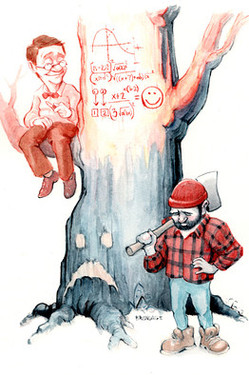In the Clinton administration, Martin Neil Baily was the Chair of the Council of Economic Advisers. He is one of those Democratic economists, along with Brad DeLong and Larry Summers, who appreciates the importance of innovation through the process of creative destruction, in making our lives better.
(p. A15) The economic attention of U.S. government and business leaders is fixed squarely on the downturn and financial crisis. Whether or not bailouts are proper short-term medicine, economists agree that the long-run solution for restoring economic growth lies in raising productivity.
The single best measure of a country’s average standard of living is productivity: the value of output of goods and services a country produces per worker. The more workers produce, the more income they receive, and the more they can consume. Higher productivity results in higher standards of living.
So how has U.S. productivity grown recently? Unfortunately, very slowly. After averaging 2.7% productivity growth from 1995 through 2002, annual growth of productivity in the nonfarming business sector has slowed dramatically — to just 1.7% in 2005, 1.0% in 2006, and 1.4% in 2007. At this new average rate of under 1.4%, it would take nearly 52 years for average U.S. living standards to double — versus just 26 years at the earlier average. Signs of this slowdown are apparent, particularly in the waning competitiveness of U.S. sectors like automobiles, financial services and information technology.
On Monday, we are issuing a new report that details a set of policies the government could implement to boost U.S. productivity growth. Time is of the essence in addressing this challenge because the economy-wide impacts of structural policies tend to appear only gradually, in part because of many-year corporate planning horizons. It is also because faster productivity growth will ease the burden of massive U.S. fiscal deficits now projected for the coming years.
A central theme of this report is the critical role that competitive product markets play in spurring productivity growth and boosting standards of living. One of the great U.S. policy successes of recent decades has been the bipartisan removal of regulations that stifle competition and innovation in product markets. U.S. industries that face strong competitive intensity are more productive than highly regulated or otherwise sheltered industries. This competition, in turn, yields higher incomes and greater choices for consumers.
Maintaining the productivity benefits of product market competition requires sound choices in areas including trade and investment, regulation and infrastructure.
For the full commentary, see:
MARTIN NEIL BAILY and MATTHEW J. SLAUGHTER. “What’s Behind the Recent Productivity Slowdown.” The Wall Street Journal (Sat., DECEMBER 13, 2008): A15.



